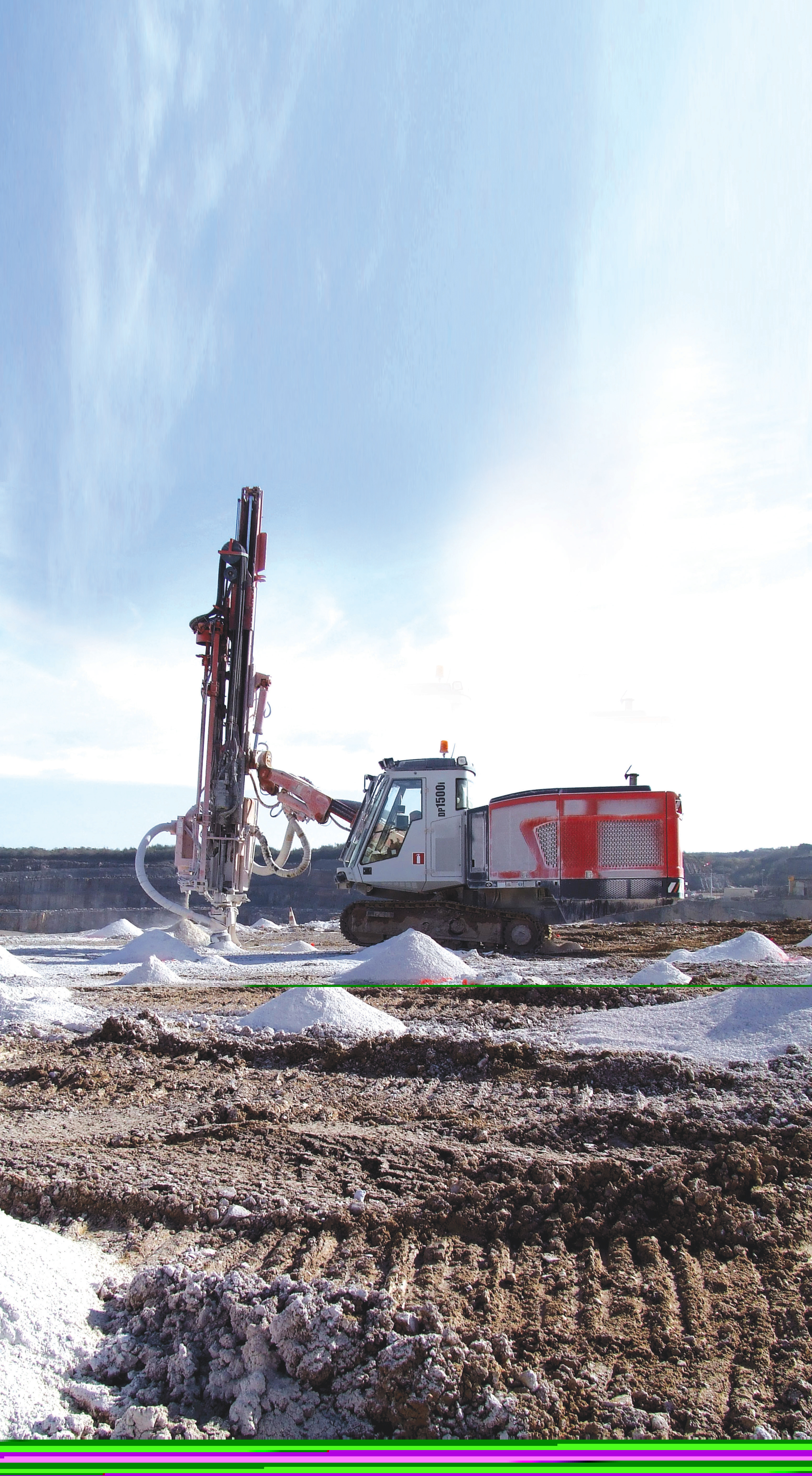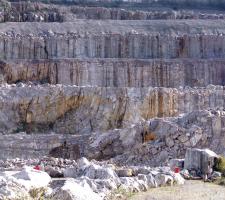
Delivery of a new Sandvik DP1500i drilling rig is helping Carrieres de la Vallee Heureuse to improve production at its Pas de Calais quarry
Famous for its Marquise Marble, the hard carboniferous limestone found in the Rinxent area of the Pas de Calais in France has been quarried since the Middle Ages. Today it is still actively quarried and around a quarter of France's annual 11million tonnes of limestone production is extracted in the Vallee Heureuse - the Happy Valley.
Carrieres de la Vallee Heureuse (CVH), which operates the second largest quarry in the area, is hoping to boost that production volume and has just invested in a new drill rig to achieve this. CVH's 250ha quarry has 100 years of reserves plus a new permit to redevelop an old part of the site, so there is plenty of work for the new
History
The quarry was one of the first commercially operated sites in the region and first opened in 1891 to provide stone for the ports of Calais, Dunkirk and Boulogne. In 1904 the Henaux family bought the site and still retains a controlling interest to this day, although
While construction materials were the initial sector targeted by the quarry, the Henaux family started to explore alternative markets during the 1960s as a means of generating additional revenue.
"Originally, the company was almost entirely dependent on the construction industries until someone realised there were huge untapped possibilities in other fields because the product is so chemically pure," said joint head of excavation Emmanuel Delacourt. "On this site the limestone is graded into three chemical types: Haut-Bant which is 82-98% pure Calcium Carbonate; Lunel which makes up the central band is an incredible 98% pure; and Dolomie which is less than 92% pure and is used for aggregates and construction."
Delacourt reports that the two upper grades have a myriad of uses ranging from animal feed, glass making, sugar beet purification, mortars, iron and steel manufacture, chemicals, pharmaceuticals, plastics, paint additives, oxidation products used in plant cleaning, and even carpet underlay - a novel use for the 0-100 micron product that would normally be regarded as waste. At the other end of the spectrum, there is also a growing use for huge "armour" products that are used in sea defences and pipeline protection.
Extraction
The current site consists of six working benches, each with a height of 15m. The precise nature and shape of the benches is the result of the incredibly accurate pre-blast planning during which the blast site is laser scanned by a tripod mounted MDL scanner to produce an accurate 3D computer simulation of the face.
A predicted blast line is calculated and then marked on the actual site, which is where the Sandvik DP1500i drill rig comes into play. "The Sandvik rig is able to drill the holes so accurately there is almost no deviation during drilling," Delacourt said.
The company then takes readings at 1m intervals of every hole with a sensor that is fitted with a compass and two angle sensors. These readings are then combined with the computer simulation, which in turn enables the blast manager to accurately determine the precise amount of explosive (usually in the region of 90Kg per bore) to be packed into each hole.
"This may seem like a lot of effort but the end result produces such precise results that it saves a fortune in post blast production, especially as we bring down 40,000 tonnes in each blast," Delacourt explained.
"The benches need a flat bottom to enable the excavators to easily move and load at each new site. By using the simulation we don't waste explosive, and we can maximise the energy to produce the maximum amount of product. We can also forecast the difficulties in the rock formation from readings from the DP1500i and allow for that.
"We normally change the rigs after 10,000 to 12,000 hours but retained the Pantera rigs while we awaited the new DP1500i," said Delacourt. "We were looking toward the future by purchasing this model. We knew we could feed in our own drilling parameters and store them on board for the operators. This is particularly useful as we use two different operators on a double shift.
"This means we can feed in data to control, the feed, rotation, speed, pitch, angle and depth, incredibly accurately. What we are ultimately looking to achieve is to work out the exact drill positions in the office on the simulator, and then guide the rig by GPS to the exact drilling position, then feed in all the data so that it will drill everything automatically. We are working closely with Sandvik on achieving this goal. At present a lot of the data is fed in by hand. But soon we should be able to data-gather automatically.
"Sandvik has already updated the software to provide our operators with greater flexibility. This ultimately means that we save on drilling time; the procedures are faster and the drilling is far more precise. On the old Pantera, we had an average deviation of 1.20m on a 15m hole. With the new rig, we have a maximum deviation of just 0.4m. This is vital because we have proved that a five degree deviation can mean a five metre difference in the position of the face. We are always looking at ways to eradicate human error and the DP1500i will help us achieve that."
















